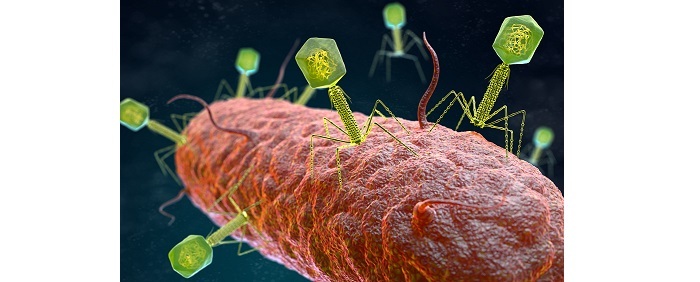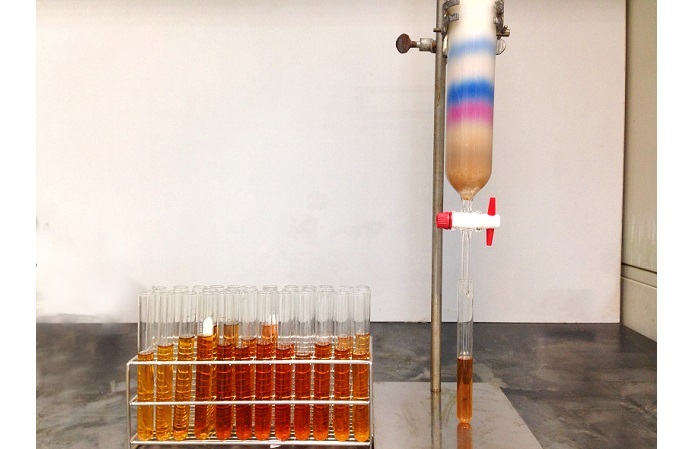
 Data Structure
Data Structure Networking
Networking RDBMS
RDBMS Operating System
Operating System Java
Java MS Excel
MS Excel iOS
iOS HTML
HTML CSS
CSS Android
Android Python
Python C Programming
C Programming C++
C++ C#
C# MongoDB
MongoDB MySQL
MySQL Javascript
Javascript PHP
PHP
- Selected Reading
- UPSC IAS Exams Notes
- Developer's Best Practices
- Questions and Answers
- Effective Resume Writing
- HR Interview Questions
- Computer Glossary
- Who is Who
Growth of Lambda Phage and Isolation of Phage DNA
Introduction
Bacteriophages, or phage's, are viruses that infect and replicate inside bacteria. They are widespread in nature and are found in almost every environment, including soil, water, and the human body. Phage's have been used for over a century as a tool to study bacteria, and they have also been explored as potential alternatives to antibiotics for treating bacterial infections. In this tutorial, we will discuss the growth of Lambda phage and the isolation of phage DNA.

Growth of Lambda Phage
Lambda phage is a temperate phage that infects Escherichia coli (E. coli) bacteria. It has a linear, double-stranded DNA genome of approximately 48.5 kilobase pairs (kbp). The growth of Lambda phage can be divided into two stages: the lytic cycle and the lysogenic cycle.
The Lytic Cycle
In the lytic cycle, Lambda phage attaches to the surface of a susceptible host bacterium and injects its genetic material into the cell.
The phage DNA takes control of the host cell's machinery and uses it to produce more phage particles. The host cell is then destroyed, releasing the newly formed phage particles.
The Lysogenic Cycle
In the lysogenic cycle, Lambda phage also attaches to the surface of a susceptible host bacterium and injects its genetic material into the cell.
However, instead of taking control of the host cell's machinery and producing more phage particles, the phage DNA integrates into the host cell's genome, becoming a prophage.
The host cell continues to divide and replicate, passing the prophage to its daughter cells. Under certain conditions, such as stress or exposure to DNA-damaging agents, the prophage may be excised from the host cell's genome and enter the lytic cycle, producing more phage particles.

Isolation of Phage DNA
Isolating phage DNA is an essential step in studying phage's and their genomes. It allows researchers to study the genetic material of phage's and explore their potential as therapeutic agents. The following is a general protocol for isolating phage DNA ?
Culturing Bacteria
First, a culture of bacteria susceptible to the phage is grown in a suitable medium. E. coli is commonly used as a host for Lambda phage, and the bacteria can be grown in LB (Luria-Bertani) broth or on LB agar plates.
Phage Infection
Next, a high-titter phage stock is prepared by infecting a culture of bacteria with the phage and allowing the phage to replicate. The resulting lysate contains a high concentration of phage particles, which can be used to infect a new culture of bacteria.
Phage Purification
The lysate is then purified to remove bacterial debris and other contaminants. This can be done by centrifuging the lysate to pellet the bacterial cells and filtering the supernatant through a 0.22 ?m pore-size filter to remove any remaining bacterial debris.
Phage DNA Extraction
The purified phage particles are then lysed to release their DNA. This can be done using a variety of methods, including heat treatment, enzymatic digestion, or chemical lysis. A common method for extracting phage DNA is the phenol-chloroform extraction method, which involves the use of organic solvents to separate the DNA from other cellular components.
DNA Purification
The extracted DNA is then purified further to remove any remaining contaminants, such as residual proteins or salts. This can be done using a variety of purification methods, including ethanol precipitation, column-based chromatography, or gel electrophoresis.

DNA Quantification
The purified DNA is then quantified to determine its concentration and purity. This can be done using spectrophotometry, which measures the absorbance of light by the DNA at specific wavelengths. The concentration of DNA is determined by comparing the absorbance of the sample to a standard curve.
DNA Quality Assessment
The quality of the isolated phage DNA is also assessed by analysing its size and integrity. This can be done using gel electrophoresis, which separates DNA fragments based on their size and charge. The DNA is loaded onto a gel matrix and an electric field is applied, causing the DNA fragments to migrate through the gel. The resulting band pattern can be visualized using a stain, such as ethidium bromide.
Applications of Phage DNA
The isolation of phage DNA has numerous applications in the study of phage's and their genomes. Some of these applications include ?
Genome Sequencing: The isolation of phage DNA allows for the sequencing of phage genomes, which can provide insights into their biology, evolution, and potential as therapeutic agents.
Gene Expression Analysis: Phage DNA can be used to study the expression of phage genes and their regulation during infection.
Genetic Manipulation: Phage DNA can be genetically manipulated to create recombinant phages with specific properties, such as enhanced infectivity or altered host range.
Therapeutic Development: Phage DNA can be used to develop phage-based therapeutics for treating bacterial infections.
Conclusion
In conclusion, the growth of Lambda phage can be divided into two cycles: the lytic cycle and the lysogenic cycle. The isolation of phage DNA is an essential step in studying phage's and their genomes and has numerous applications in the study of phage's and their potential as therapeutic agents.
The protocol for isolating phage DNA involves culturing bacteria, infecting the bacteria with the phage, purifying the phage particles, extracting the phage DNA, purifying and quantifying the DNA, and assessing its quality.
Phage's have been widely used as a tool for studying bacteria for over a century and have recently gained attention as potential alternatives to antibiotics for treating bacterial infections. The study of phages and their genomes continues to be an exciting area of research with promising therapeutic implications.

